Ear
Ear articles
{category}
Ear and Infant-Child articles
{category}
2.4X increase in US newborns with poor or no hearing
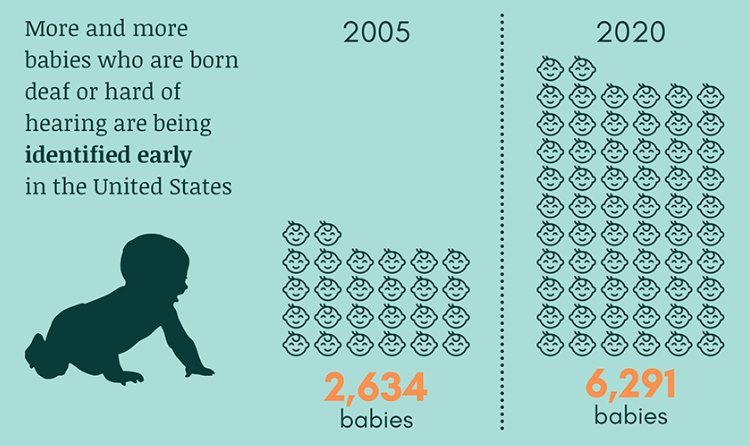
CDC ( 0.7 per 1000 births ==> 1.7 per 1000 births | a 2.4 X increase in 15 years)
Vitamin D is essential while pregnant - especially 1st and 2nd timester for hearing
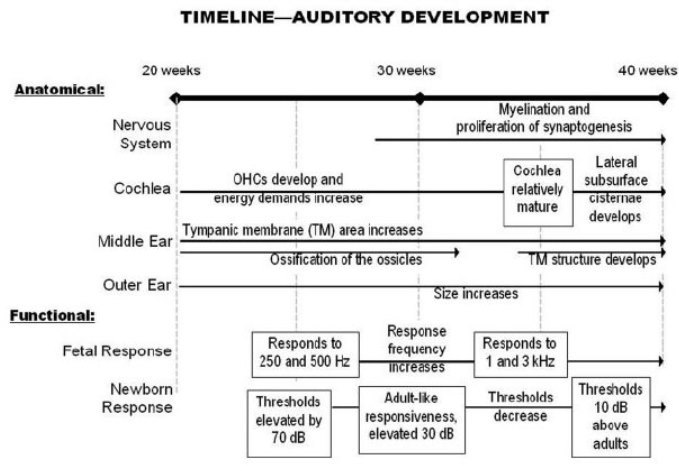
The Development of the Auditory System from Conception to Term - March 2005 DOI: 10.1542/neo.6-3-e141
📄 Download the PDF from Sci-Hub via VitaminDWiki
VitaminDWiki – Ensure a healthy pregnancy and baby - take Vitamin D before conception
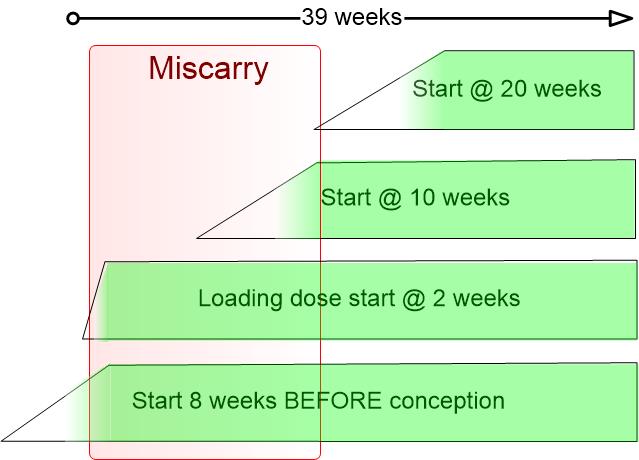
20% Less Hearing loss in speech frequencies if high Vitamin D – July 2024
Association of serum 25-hydroxyvitamins D2 and D3 with hearing loss in US adults: analysis from National Health and Nutrition Examination Survey, 2015-2016
Front Nutr. 2024 Jul 26:11:1390953. doi: 10.3389/fnut.2024.1390953
Feng Chen # 1 2, Yufan Gao # 1, Yukai Wang # 1, Ziyu Pan 1, Yinuo Chen 1, Huixiang Sheng 1, Qi Chen 3, Fan Ye 2
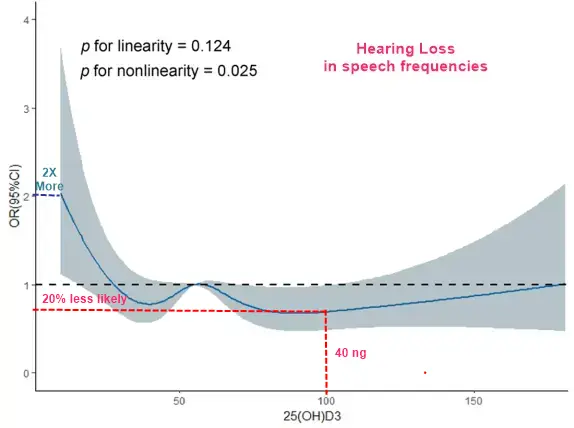
Note: Speech frequency hearing loss associated with various vitamin D deficiencies
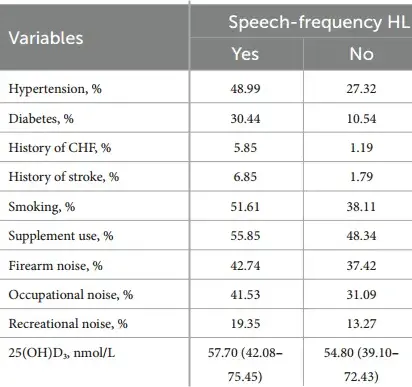
Background: Hearing loss (HL) is increasingly recognized as a significant global public health issue, and research on its relationship with vitamin D levels has gained wider attention. However, the association between serum biomarkers 25-hydroxyvitamin D2 (25(OH)D2) and D3 (25(OH)D3) with different types of HL remains unclear. This study aimed to investigate the potential association of serum 25(OH)D2 and 25(OH)D3 with HL in US adults.
Methods: A sample of 3,684 individuals aged 20-69 years from the 2015-2016 National Health and Nutrition Examination (NHANES) was analyzed in this study.
HL was defined as a pure tone average (loss) >25 dB in either ear at
low frequencies (500, 1,000, 2000 Hz),
speech frequencies (500, 1,000, 2000, 4,000 Hz), and
high frequencies (3,000, 4,000, 6,000, 8,000 Hz).
Logistic regression was employed to examine the association between serum 25(OH)D2 and 25(OH)D3 and HL. The study population was then stratified by age, gender, race, and education level to analyze potential differences between adults in different subgroups.
Results: In the multivariate analysis, it was found that serum 25(OH)D2 was independently associated with low-frequency hearing loss (LFHL) (OR: 1.012 [95% CI, 1.005-1.020]) and speech-frequency hearing loss (SFHL) (OR: 1.011 [95% CI, 1.003-1.018]). Restrictive cubic spline analysis demonstrated a linear dose-response relationship between serum 25(OH)D2 levels and LFHL (p for linearity <0.001), as well as SFHL (p for linearity = 0.001). Conversely, an L-shaped association was observed between serum 25(OH)D3 levels and both LFHL (p for nonlinearity = 0.014) and SFHL (p for nonlinearity = 0.025), with threshold values identified at 35.3 and 36.5 nmol/L, respectively. Higher levels of serum 25(OH)D3 were associated with a lower probability of high-frequency hearing loss (HFHL) (OR: 0.994 [95% CI, 0.989-0.999]), with a threshold value identified at 53.9 nmol/L. Furthermore, a significant interaction between diabetes and serum 25(OH)D2 in LFHL was revealed through subgroup analysis (p = 0.041). In the non-diabetic population, serum 25(OH)D2 maintained its association with LFHL.
Conclusion: Our findings suggested a positive association between serum 25(OH)D2 concentrations and both LFHL and SFHL in the studied cohort. Additionally, an L-shaped relationship was found between serum 25(OH)D3 and LFHL and SFHL, and higher levels of serum 25(OH)D3 were identified to be associated with a lower risk of HFHL.
📄 Download the PDF from VitaminDWiki
Tinnitus
Tinnitus greated decreased by weekly 50,000 IU of Vitamin D for 3 months - Jan 2021
Vitamin D Level and its Relation to Tinnitus
Egyptian Journal of Ear, Nose, Throat and Allied Sciences # 21, Vol 22, Issue 22, January 2021, Page 1-5 (613.74 K) 10.21608/ejentas.2020.37810.1243
Salwa Mourad Abdelmawgoud, Audiovestibular Unit, Otolaryngology Department, Sohag University Egypt
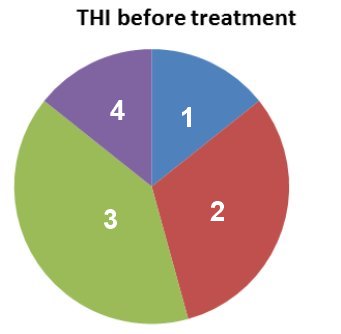

1 = lowest tinnitus level

Objective: to evaluate vitamin D levels in patients with tinnitus and to assess subjectively the efficacy of its supplementation in case of deficiency.
Methodology: 35 adult complaint of bilateral tinnitus with the age range from 20 to 50 years were included. All had bilateral normal audiological evaluation. Vitamin D level was assessed and those that had deficiency received supplementation for 3 months. Tinnitus handicap inventory (THI) was taken for the first time to all participants and another time for those received vitamin D supplementation after the 3 months regiment, and comparing the results.
Result: From the 35 participants there was 30 subjects had vitamin D deficiency (85.71 %). THI before treatment showed larger numbers in scale 3 then 2, 1, 4 with no patients with scale 5.while THI after treatment showed larger numbers in scale 1 then 2 & 3 with no patients with scale 4 & 5. There was no significant correlation between THI score & Vitamin D level and the age of the participant or the duration of the complaint.
Conclusion & recommendations: vitamin D deficiency is common among tinnitus patients. The result of vitamin D supplementation is promising in cases of idiopathic tinnitus. We recommend doing vitamin D assay in patients with idiopathic tinnitus and hence giving vitamin D supplementation in case of deficiency trying to improve the quality of life.
📄 Download the PDF from VitaminDWiki
Vitamin D treats Tinnitus - meta-analysis March 2023
Serum Vitamin D Concentration Is Lower in Patients with Tinnitus: A Meta-Analysis of Observational Studies
Diagnostics 2023, 13(6), 1037; https://doi.org/10.3390/diagnostics13061037
by Riccardo Nocini 1,Brandon M. Henry 2,Camilla Mattiuzzi 3ORCID andGiuseppe Lippi 4,*ORCID
1Unit of Otorhinolaryngology, Department of Surgery, Dentistry, Paediatrics and Gynaecology, University of Verona, Piazzale L. A. Scuro, 37134 Verona, Italy
2 Clinical Laboratory, Division of Nephrology and Hypertension, Cincinnati Children’s Hospital Medical Center, 3333 Burnet Ave., Cincinnati, OH 45229, USA
3 Medical Direction, Rovereto Hospital, Provincial Agency for Social and Sanitary Services (APSS) of Trento, Via Alcide Degasperi, 38123 Trento, Italy
4 Section of Clinical Biochemistry, School of Medicine, University of Verona, Piazzale L. A. Scuro, 37134 Verona, Italy
Background: Tinnitus is a highly prevalent and frequently disabling condition, such that the identification of possible causal mechanisms would yield significant clinical and social benefits. Since vitamin D (Vit D) is involved in the pathogenesis of several ear disturbances, we review here the current scientific literature addressing the relationship between Vit D status and tinnitus.
Methods: An electronic search was conducted in PubMed, Scopus and Web of Science with the keywords “tinnitus” and “Vitamin D” or “Vit D” or “25OH-D” or “cholecalciferol” or “ergocalciferol” or “hydroxycholecalciferol”, without date (i.e., up to 8 February 2023) or language restrictions, in accordance with a protocol based on the transparent reporting of systematic reviews and meta-analysis (PRISMA) 2020 checklist, for identifying studies which assayed serum Vit D concentration in patients with or without tinnitus.
Results: Three observational, case-control studies encompassing four cohorts and totaling 468 patients with (n = 268) or without tinnitus (n = 200) were included in this meta-analysis.
Pooled analysis with quality effects models evidenced significantly reduced serum Vit D levels in patients with tinnitus compared to those without (weighted mean difference [WMD], −6.2 ng/mL; 95% CI, −10.3 to −2.1 ng/mL; I2, 56%). Serum Vit D was found to be 22% lower in patients with tinnitus compared to those without.
Possible ways low D could be associated with Tinnitus

Conclusions: Lower serum Vit D levels may be associated with tinnitus, thus paving the way to plan future trials aimed at exploring whether Vit D supplementation may aid in preventing and/or improving tinnitus.
📄 Download the PDF from VitaminDWiki
Tinnitus strongly associated with low vitamin D, all tinnitus patients should be tested – Aug 2021
The role of vitamin D in subjective tinnitus-A case-control study
PLoS One. 2021 Aug 18;16(8):e0255482. doi: 10.1371/journal.pone.0255482
Magdalena Nowaczewska 1, Stanisław Osiński 1, Maria Marzec 1, Michał Wiciński 2, Katarzyna Bilicka 1, Wojciech Kaźmierczak 3


Regarding the high prevalence of vitamin D (25(OH)D) deficiency in the population and its possible association with ear diseases, we aimed to investigate the 25(OH)D serum level in patients with subjective, nonpulsating tinnitus and its effect on tinnitus severity. The study included 201 tinnitus patients and 99 controls. Patient clinical information, including tinnitus characteristics and severity according to Tinnitus Handicap Inventory (THI) , loudness assessed by Visual Analogue Scale (VAS), audiometry, and the blood level of vitamin D, was recorded. The level of 25(OH)D in tinnitus patients was significantly decreased compared with the controls (19.86 ± 7.53 and 27.43 ± 8.85 ng/ml, respectively; P value < 0.0001).
More patients in the tinnitus group were deficient in vitamin D, compared with the controls (50.7% vs. 22.2% respectively, p < 0.0001) . Tinnitus patients with a lower serum level of 25(OH)D (≤15 ng/dl) were significantly younger, had a higher degree of tinnitus severity measured with THI and VAS scales, had higher triglyceride and TSH levels, and a lower HDL level compared with individuals who had higher 25(OH)D level (>15 ng/dl). There was a strong correlation between the 25(OH)D level and THI. Our findings suggest that a large proportion of tinnitus patients suffers from vitamin D deficiency and that the vitamin D level correlates with tinnitus impact.
We recommend a vitamin D assessment for all tinnitus patients.
📄 Download the PDF from VitaminDWiki
Tinnitus is assocated with low D even with normal hearing - April 2023
Association of Vitamin D Deficiency in Patients with Tinnitus with Normal Audiograms
Indian Journal of Otolaryngology and Head & Neck Surgery - Vol 75, pages 1992–1999, (2023) https://doi.org/10.1007/s12070-023-03751-z
Deepika Sharma, Vipan Gupta, Shenny Bhatia & Pooja Thakur
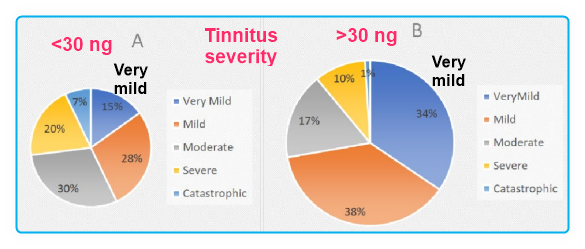
In the present study we aim to evaluate serum vitamin D levels in participants having tinnitus with normal audiometric findings. Total 98 participants in the age range 20–70 year were included in the study. Participants underwent detail case history, ear examination, pure tone audiometry and impedance audiometry. 68 participants with subjective tinnitus for more than 3 months and with normal audiometric thresholds and “A” type tympanogram were included in study group and 30 participants without tinnitus in the control group. The participants fullfillng the inclusion criteria underwent thorough tinnitus evaluation which included administration of tinnitus severity index tinnitus handicap inventory, psychophysical evaluation of tinnitus (pitch matching, loudness matching) and assessment of Vitamin D levels. It was seen that the mean Vitamin D levels were significantly lower in study group, and out of 68 participants only 11 had optimal Vitamin D levels, 57 (83%) had Vitamin D levels less that 30 mg/dl. In the control group 20 (66%) had vitamin D deficiency.
The difference came out to be statistically significant. Our study suggests that there is a link between vitamin D and tinnitus, in view of these findings we recommend evaluating serum Vitamin D levels in patients of chronic idiopathic tinnitus, especially in adults with normal hearing. Our study suggests vitamin D deficiency may be one of the risk factor for tinnitus in people with normal hearing in the absence of other manifestations.
